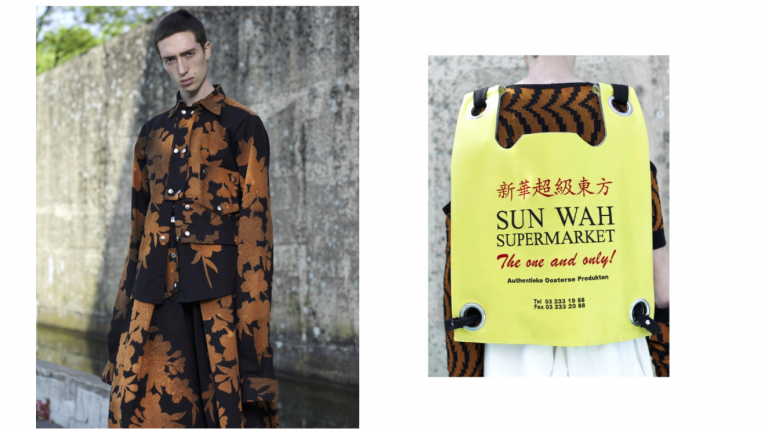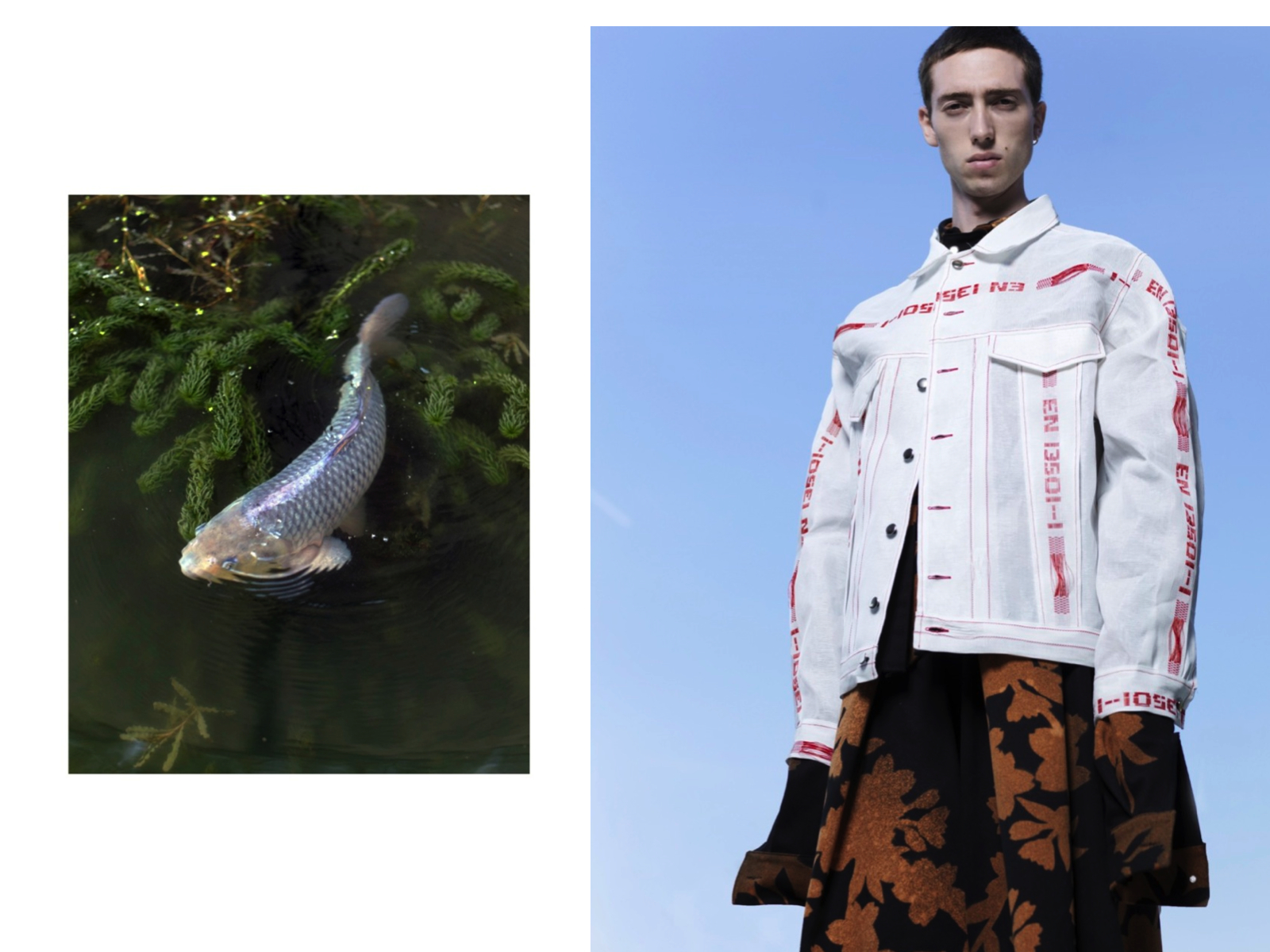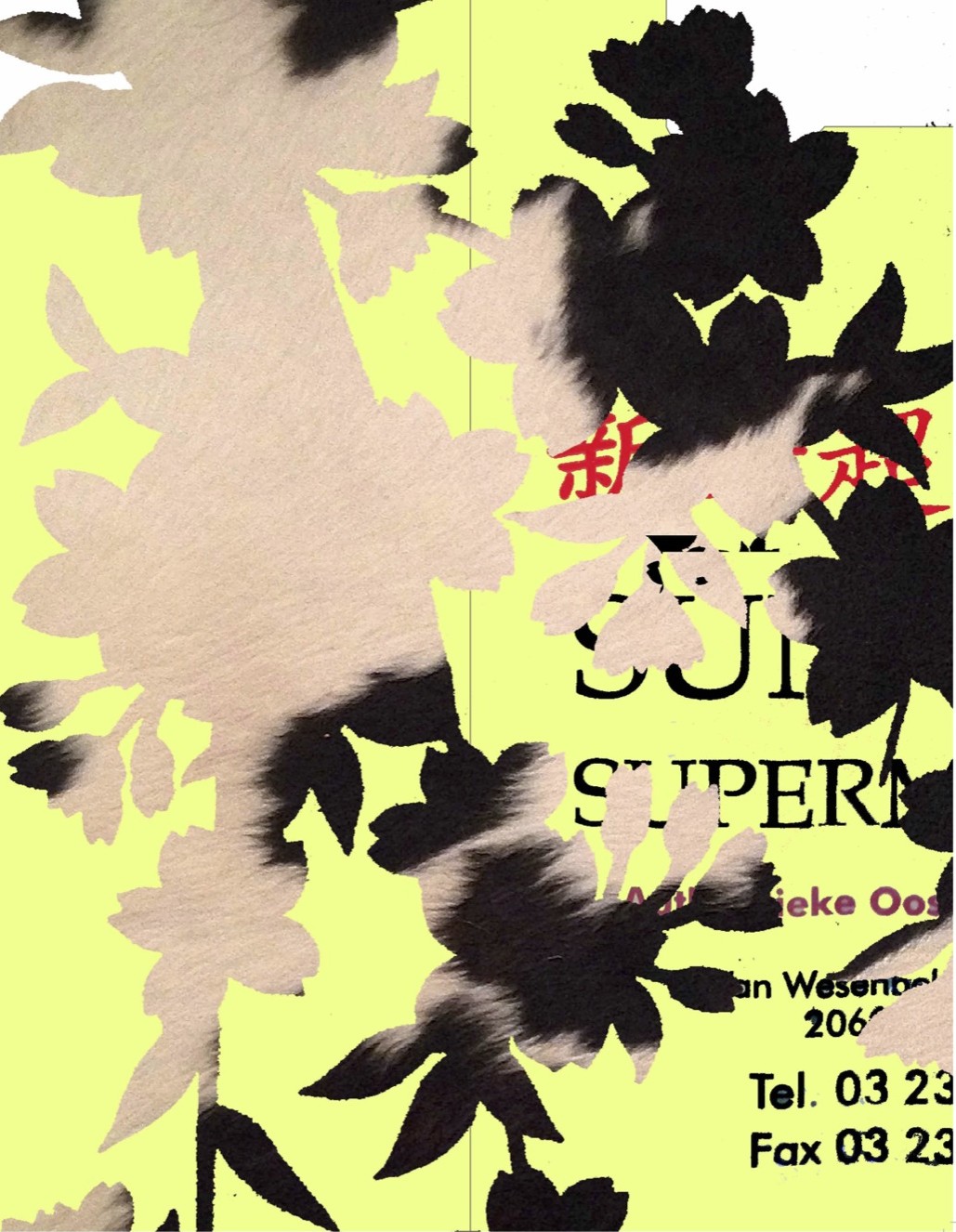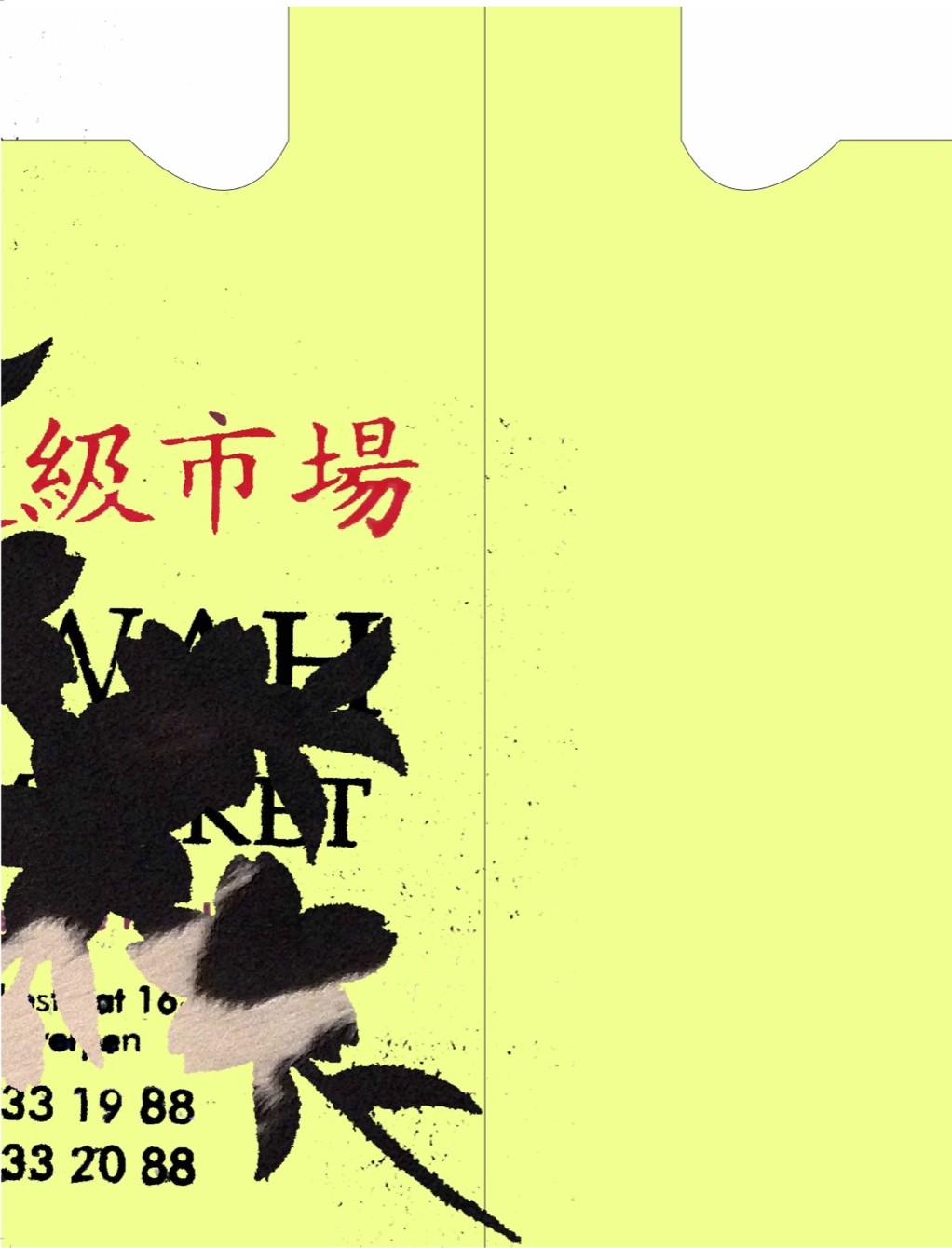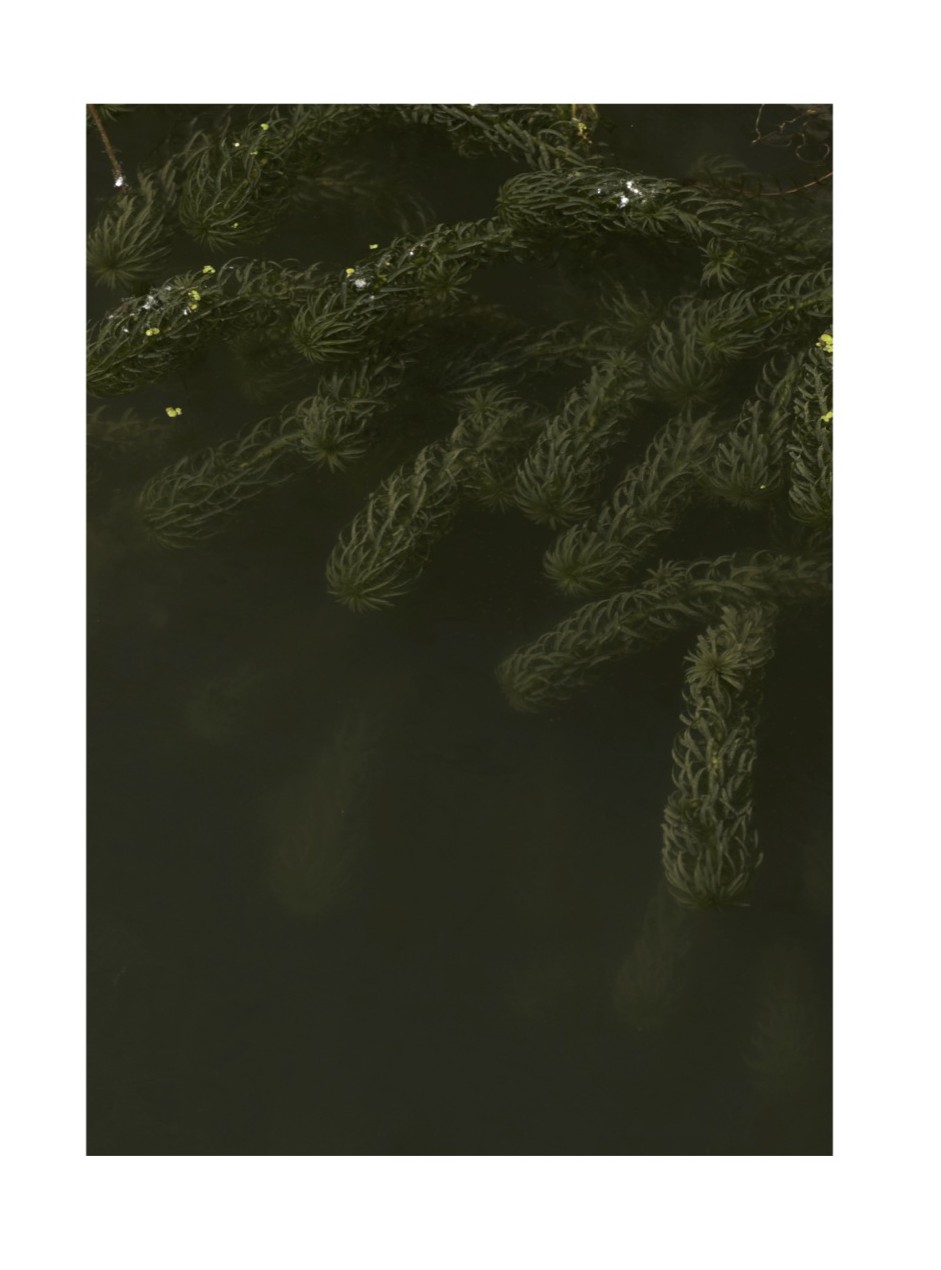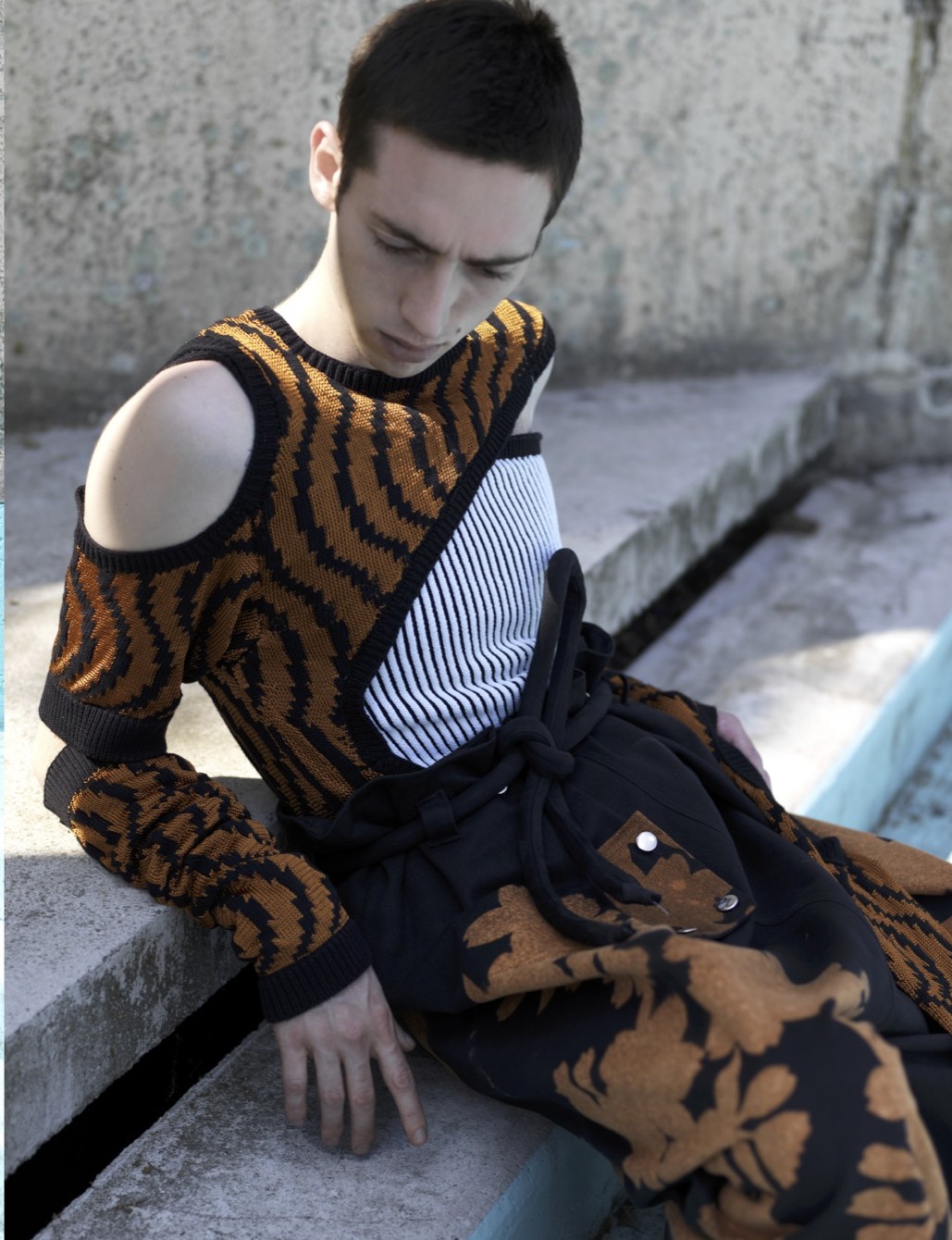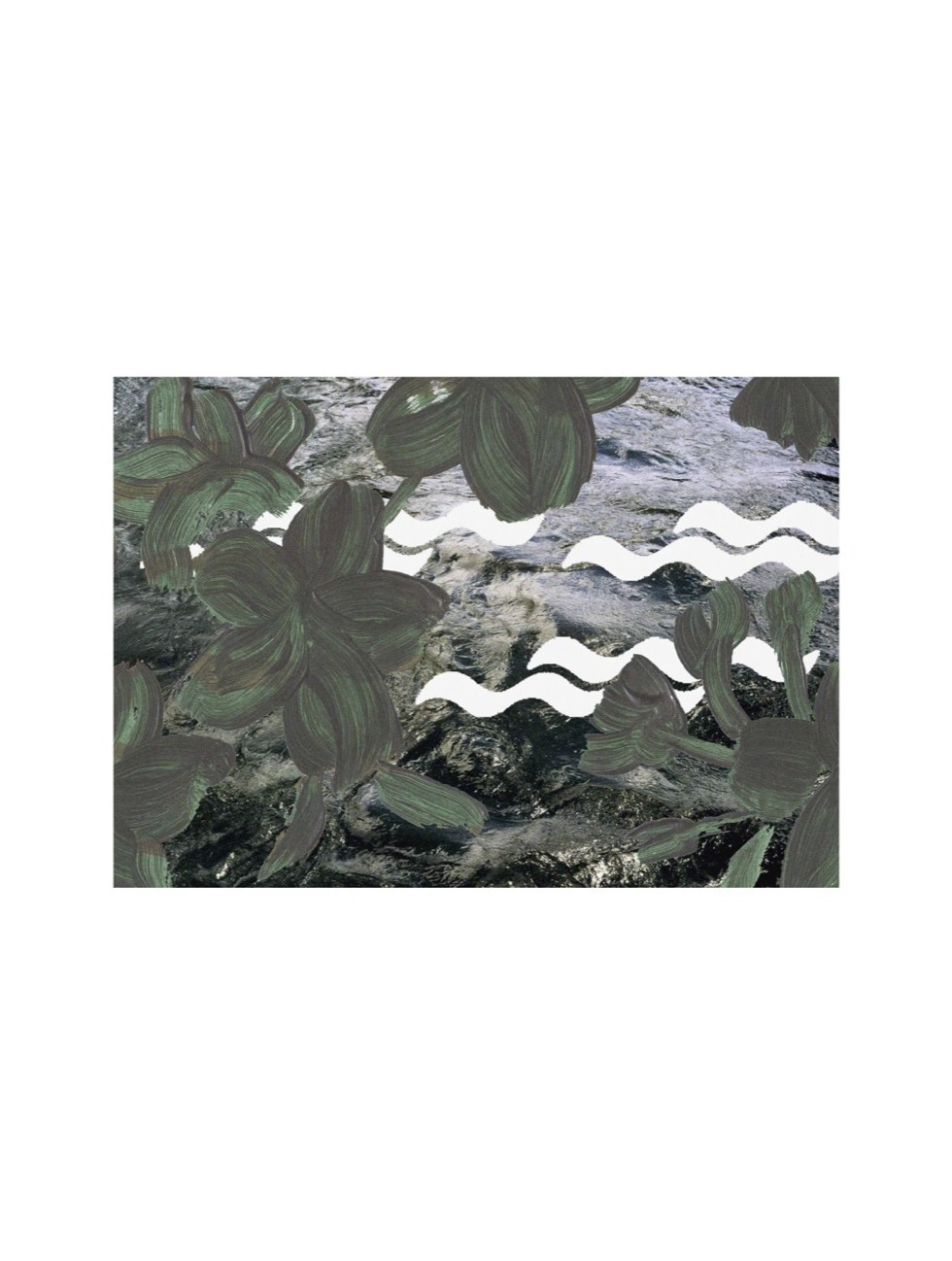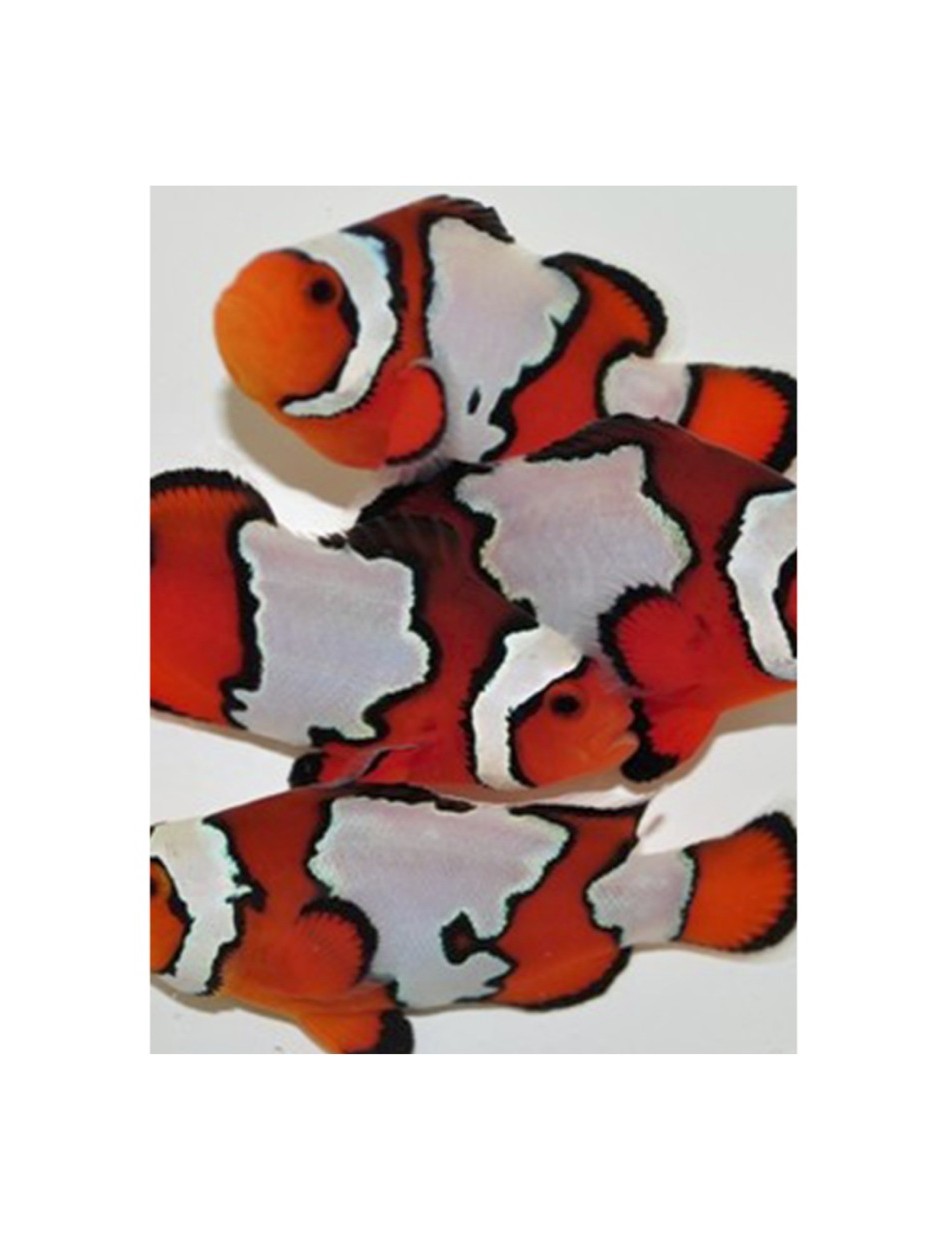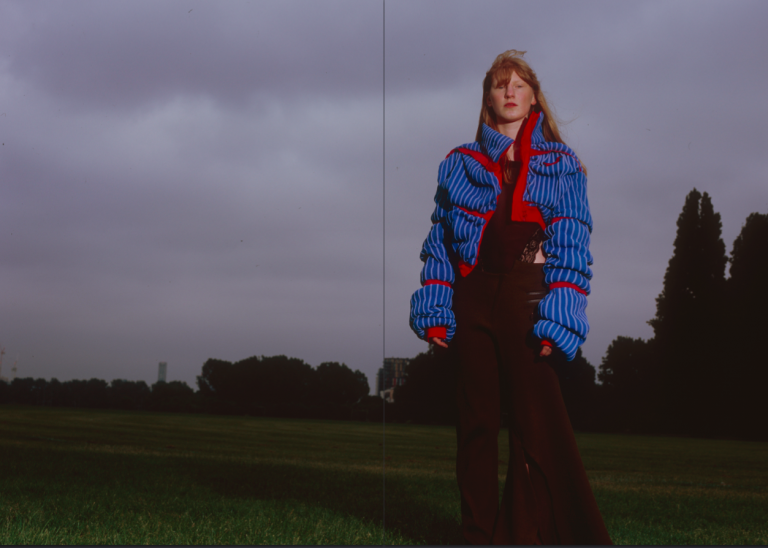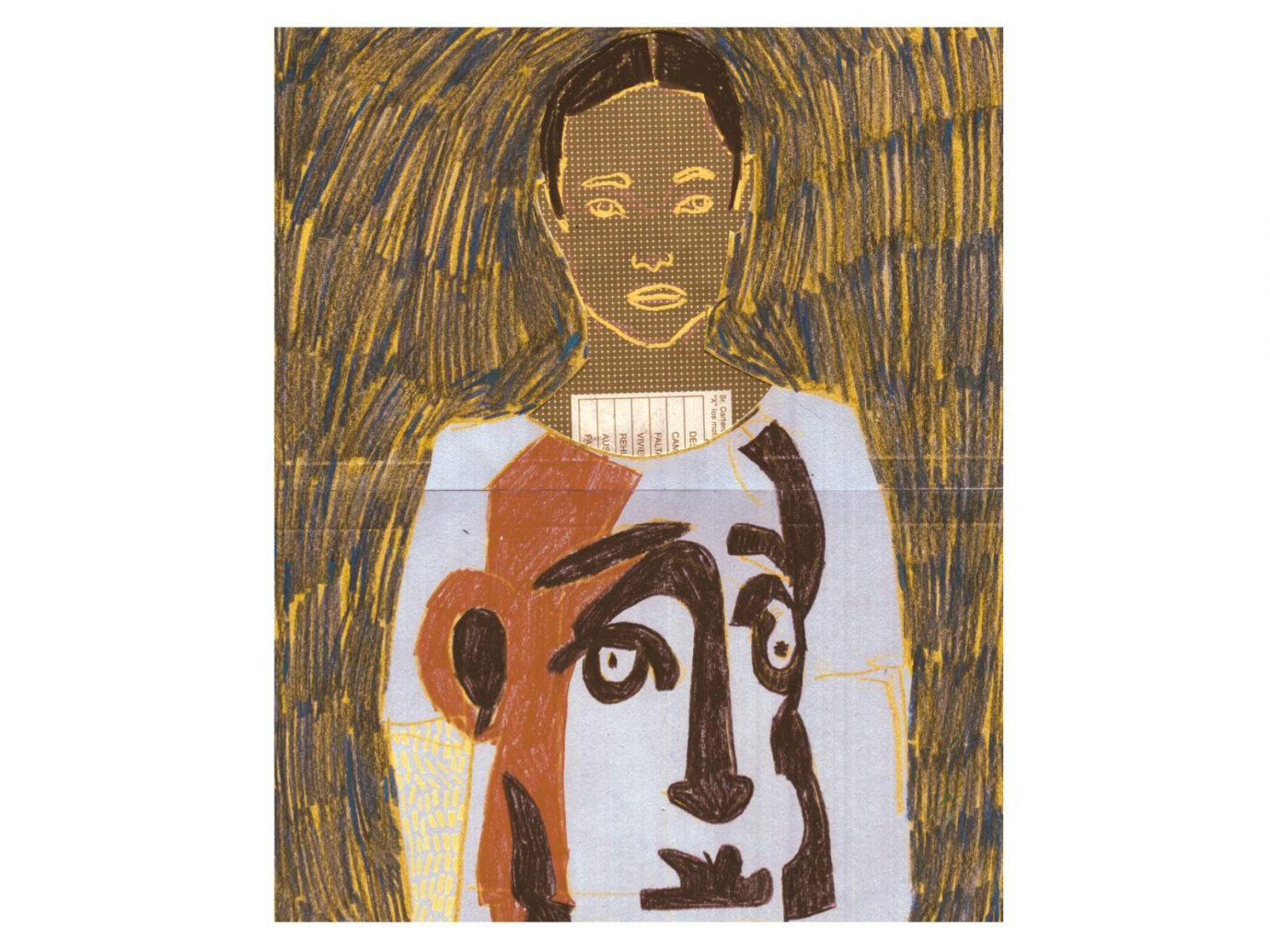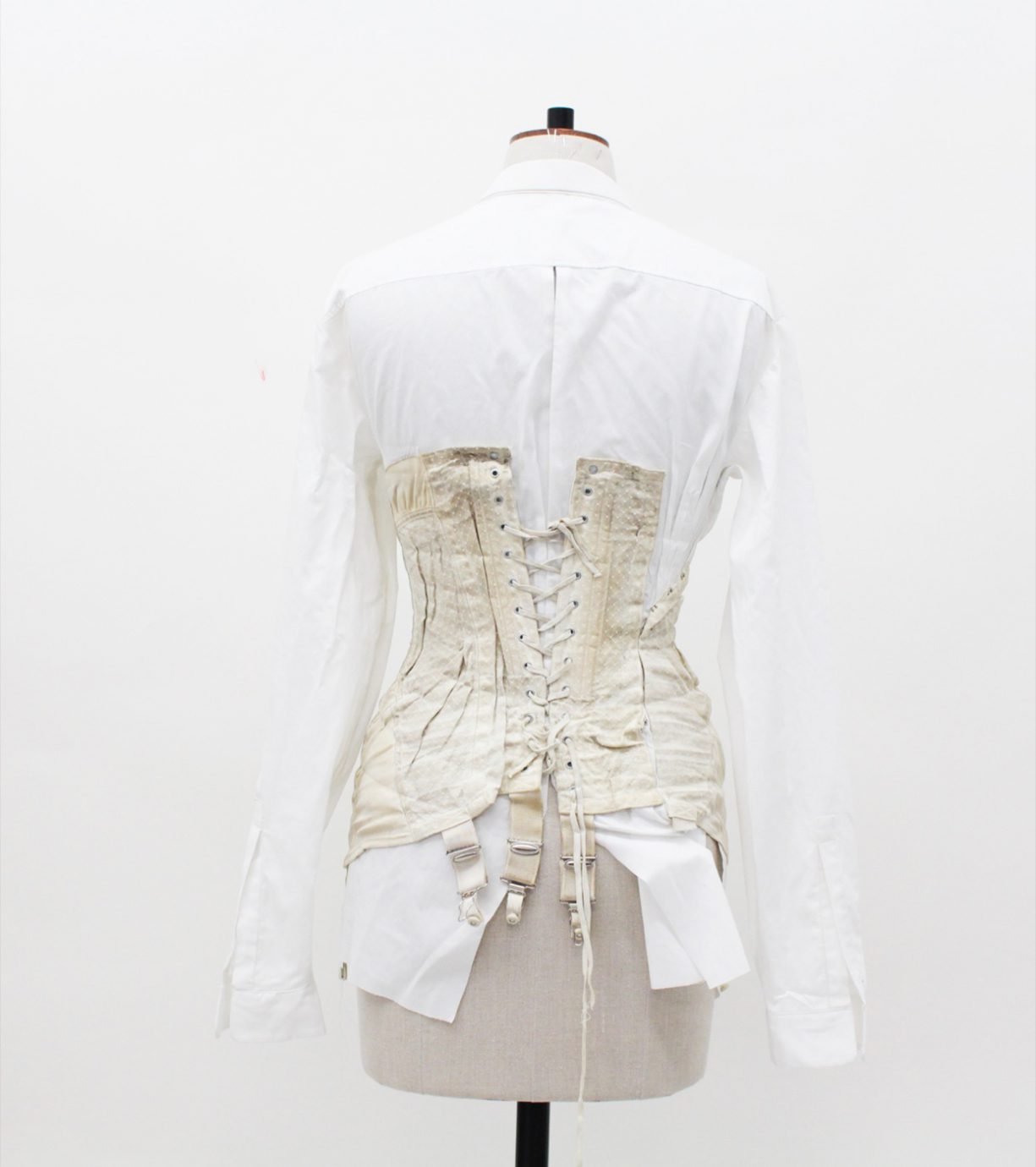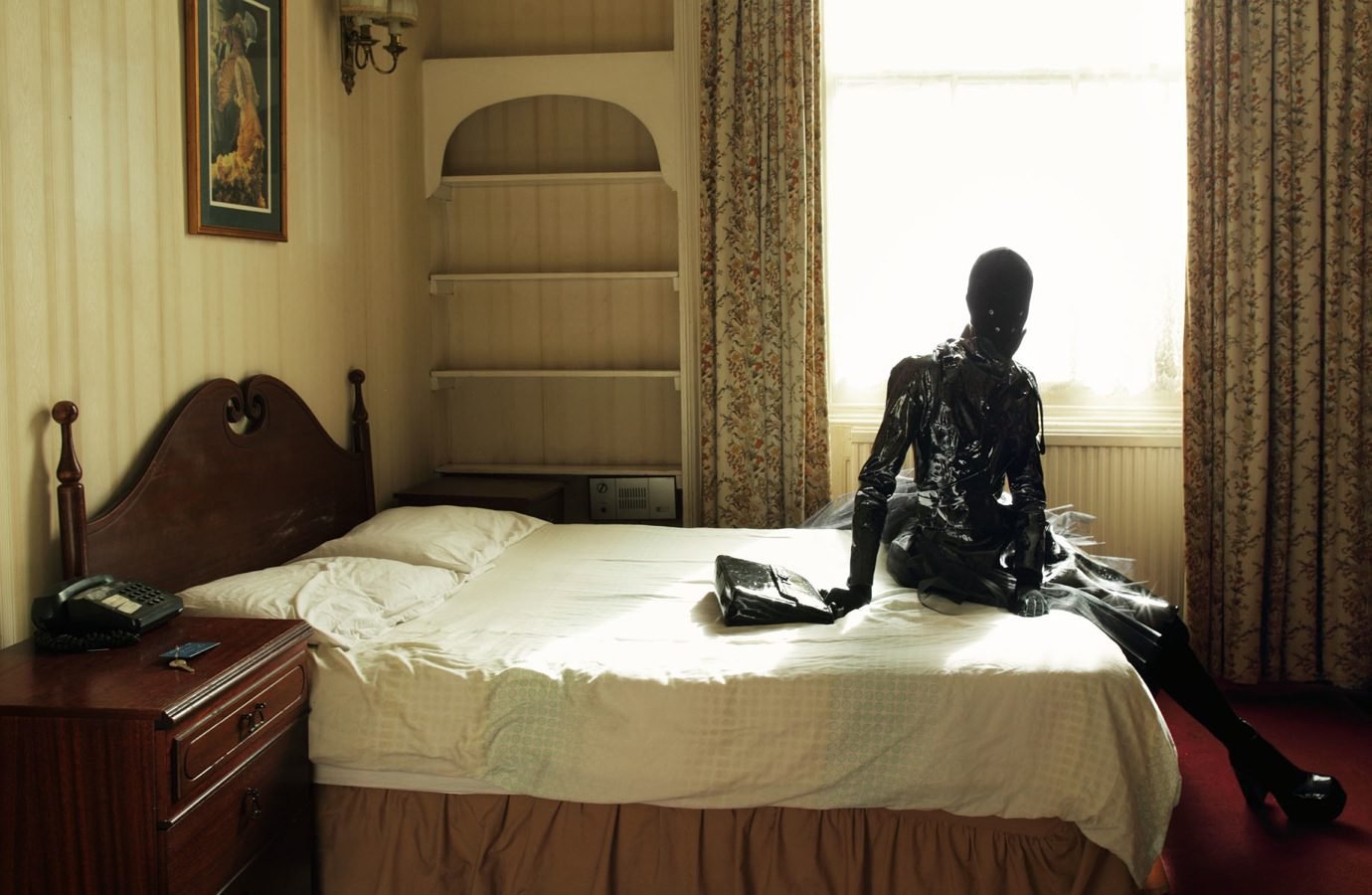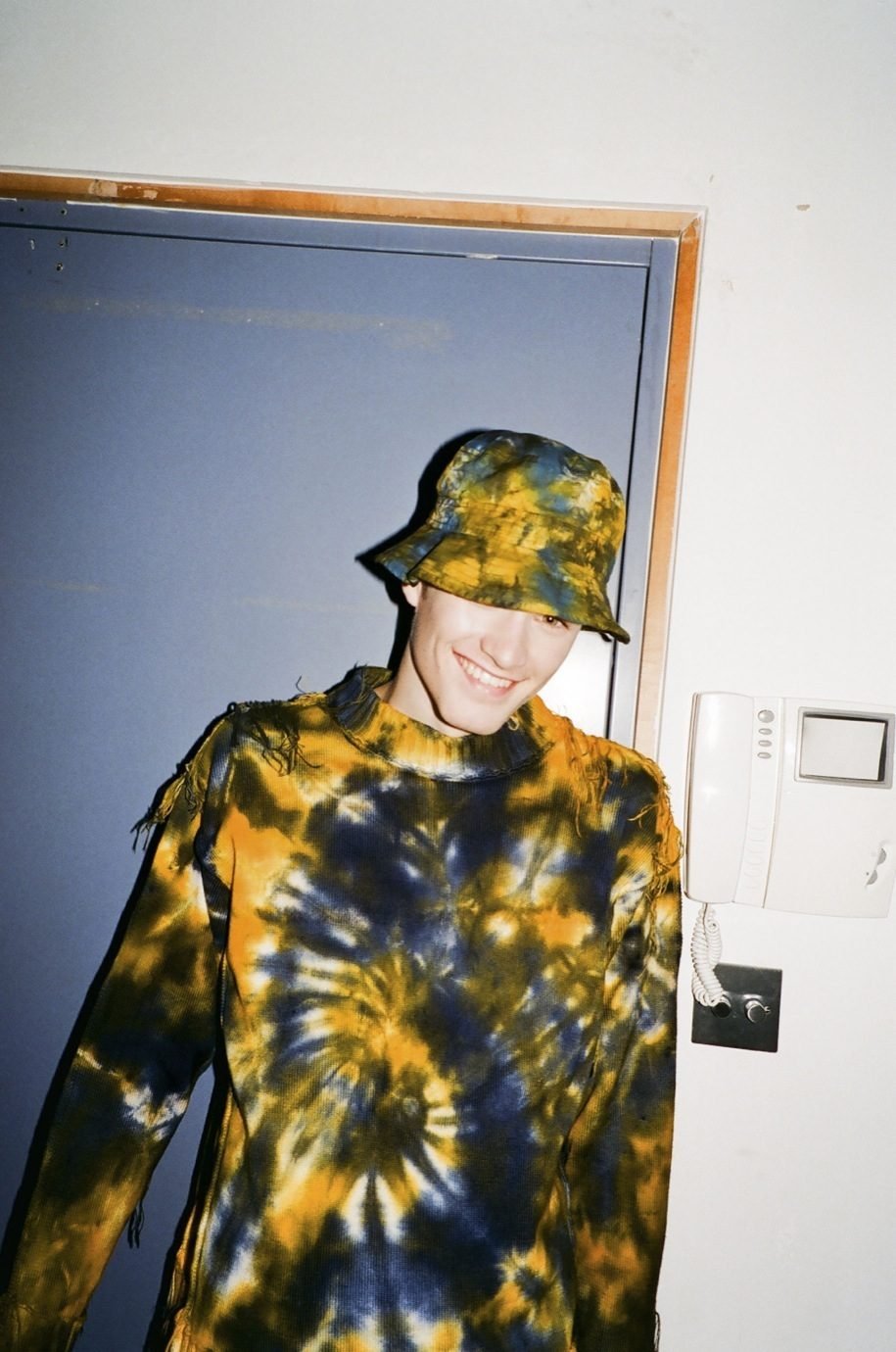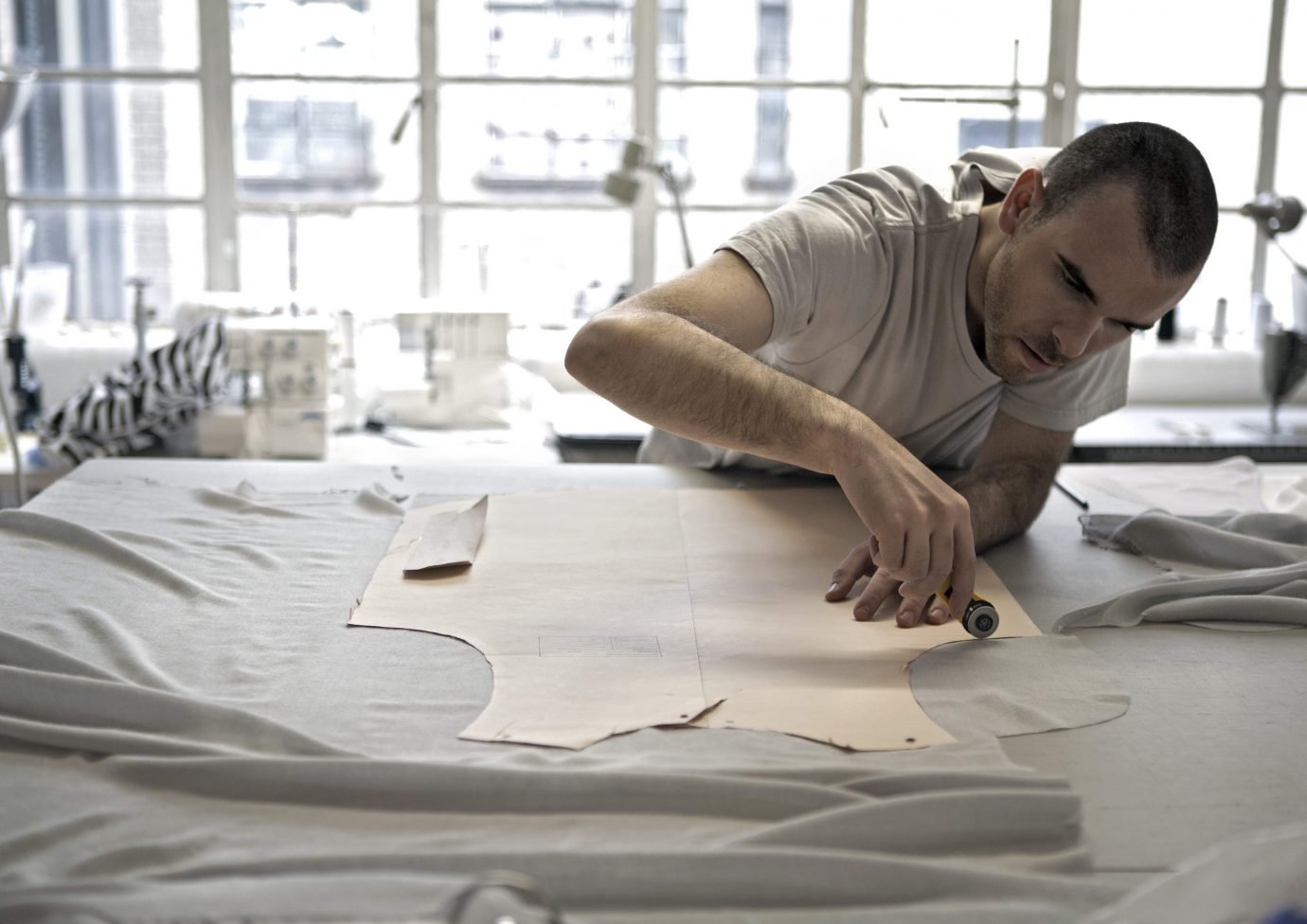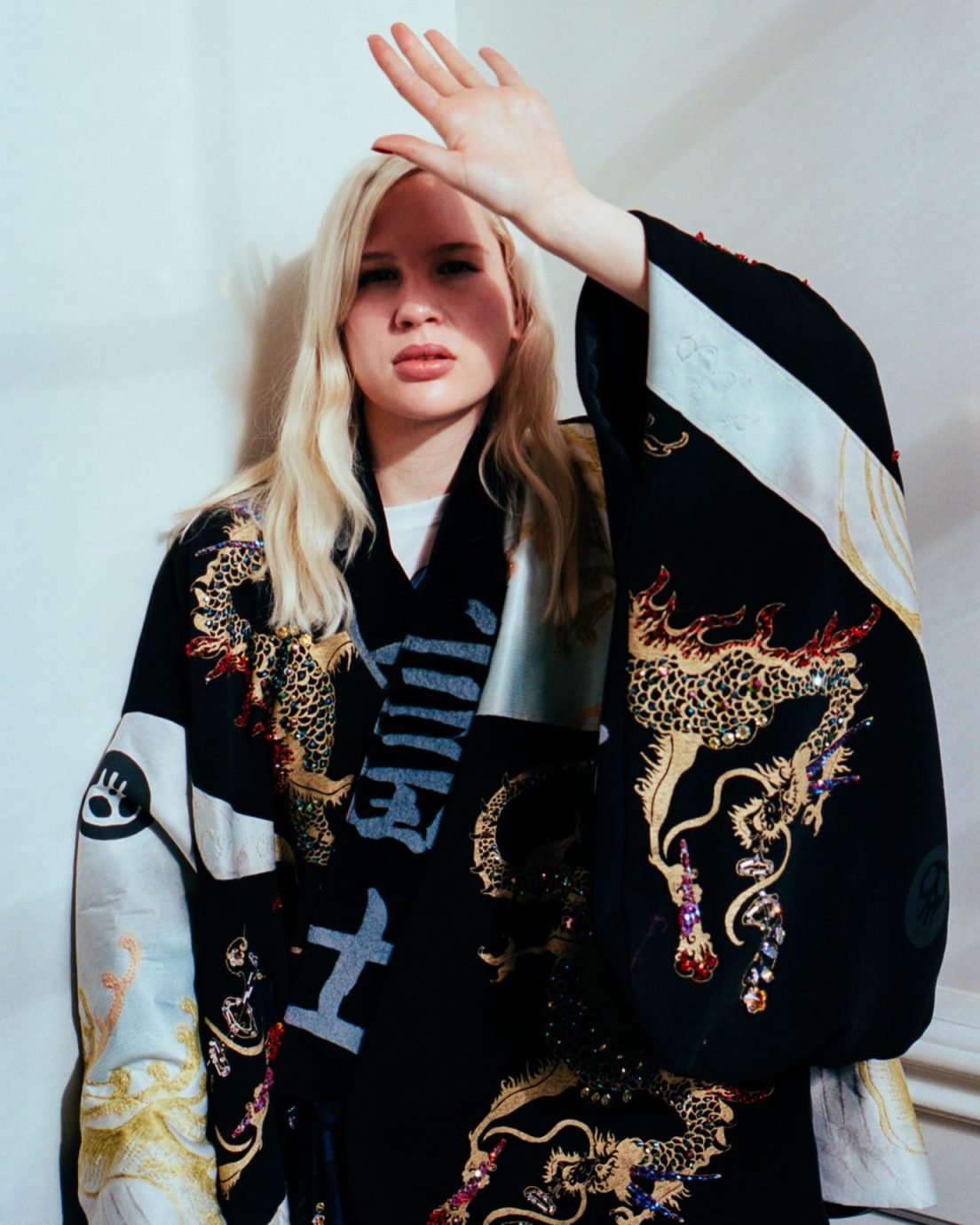“The bag works well in a graphic sense: the typography and the colours are great. It’s also a good supermarket, I enjoy going there. It’s in the Chinese district in Antwerp. There isn’t a story behind it, I just go there to shop for my groceries. I like the shape of the bag as well — I did mine in leather and embroidery. I asked the owners of the store and they were fine with it as long as it wasn’t putting the store in a bad light. I changed a few letters of the markings, but it means the same thing. I like the idea of referencing something ordinary, and making it more luxurious. I also used a material that is used to cover construction sites — it is a kind of net, which is rainproof. I thought it would be beautiful to make a garment out of it. It makes sense because it looks like an outdoor garment. It almost looks like a jacquard.”
The Antwerp Sixteen: Eduard Both
1. The most talked about piece from his BA collection was a leather recreation of a plastic Chinese supermarket bag, which epitomised his “making the ordinary extraordinary” design philosophy.
2. He doesn’t work with a singular concept. Instead, he gathers various influences and inspirations that have had a personal impact on him, and integrates them to create a collection that can be described as a beautiful and sentimental jigsaw puzzle.
“For me, a concept was maybe a little too limiting, in a way. This has been the key lesson in my career so far. I’ve found a way to let everything come to me. This is why I called the collection ‘Journey to Oldham’. The collection is a journey and Oldham is a real city in Israel. I was literally looking for it while thinking about how I was going to start my next collection, and I decided to stop my search of finding one topic for the collection, and let it all come together. Everything that I saw, that I liked, that made me feel calm and peaceful, I used in the collection. This approach worked well for me. I came up with the idea for this collection while I was in Israel, but as you can see, it has very little to do with it. It was a very long walk. I found what I was looking for back then, but there’s always going to be a different and new Oldham. There’s always going to be a different thing or place to look for.”
3. He despises the romanticized notion of the lone artist working in his studio, because it does not fully characterize his free-spirited approach to creativity.
“It has been important to let my work rest by taking a step back from it once in a while. This year, I went to London, Paris, Milan and Amsterdam to discover new things. I always returned home with a lot of energy and new ideas. Young design students should do it more often. It is understandable that it is a very intense year. There’s only a certain amount of time that you have, so people don’t offer themselves the opportunity and the time to do it. I think it’s a bad decision. The school should also encourage students to stay aware. Whether it’s a party or exhibition, you should go and check it out, otherwise you can’t create or be creative. I didn’t do it often before, because I thought I didn’t have enough time. Having fun might seem like a waste of time, but it’s not. It is possible to be inspired by a garment or fashion spread in a magazine, but experience is so much better. It’s also because of accessibility… There are some people who think that they are in touch with the whole world when they are sitting behind their Macbook or iPhone. They might be, but it’s not the same feeling as seeing things in-person. I might be triggered when I see something on my computer, but I want to go check it out in real life.”
4. Antwerp Fashion Department’s Show 2016 was riddled with political references. From its official poster, which featured Walter van Beirendonck’s “Stop Terrorising Our World” clear plastic tunic to the show’s zine. While some collections were flecked with political messages to appear current, Both’s work stood out refreshingly, because he believes in creating interesting clothes that were not trying to speak out of turn.
“A lot of the students have done it and that’s their choice, but that’s not the artist or designer I want to be. For me, it is important to create beauty, and to bring beauty into this world with no further message. I try to prevent my work from being influenced by political or social crises. I don’t feel the need to post something on Instagram when there’s an attack, because there are different kinds of responses to deal with crisis. Fashion has a strong influence on a lot of different social classes, and it’s definitely good that people are using fashion as a medium to communicate political or social messages, but it’s not what I’m trying to do and I’m not going to force it. I read the newspapers and I’m very in touch with the rest of the world, but it doesn’t mean I have to weave it into my collections. I have my own story, and if people are interested in it, they are always welcom to enjoy it.”
5. His creative ambitions go beyond the borders of Antwerp.
“I am from Antwerp. I’ve experienced it very differently from other students. I was close to my family while others were here on their own.To be in the city where you grew up wraps you in a comfort zone — it made things a little difficult for me. My tutors constantly encouraged me to go beyond my comfort zone. I went travelling and I’m going to keep doing it. I want to leave Antwerp soon. I’m going to apply for the MA in Antwerp, but after that, I’m not aiming for a career in Belgium. This is my home and I can always come back whenever I want. I definitely want to go abroad to discover new things. In terms of my ambitions, I don’t want to lead a studio. I am a team player. I want to specialise in knitwear. I would like to create something that is completely mine in every way. It is possible in knitwear, but also in weaving and jacquards. I am more textile-focussed than designing ready-to-wear.”

